The premises over the Lexus showroom in Windsor Place, on Janpath Road, is a happy haunt for us. This is where we were authenticated (read “Blue-ticked”) by Zomato a decade back. From being a spot for food for the body, the upper floors of this building are now Delhi Art Gallery (DAG), a spot for food for the soul.
DAG is now holding an exhibition that takes us back in time over a century. Titled “The Babu and The Bazaar”, they are displaying paintings from the 19th century and perhaps early 20th century Calcutta and other parts of Bengal. The Pats of Bengal exuded a universal appeal. These pieces were not only bought by locals. Many Britishers commissioned or bought Pat paintings and carried those back to England as gifts and souvenirs. Many such paintings are on display in British museums. Curated by Aditi Nath Sarkar with Shatadeep Maitra, many Pat paintings that are still available in India are on display at DAG.
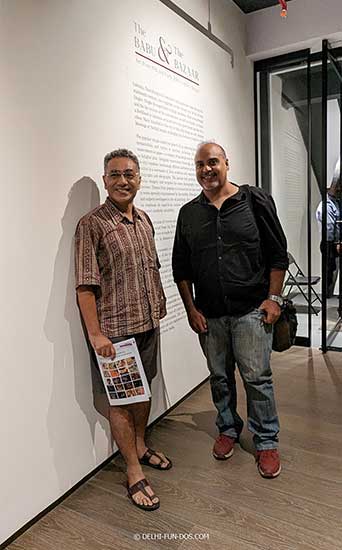
DAG is closed on Sundays so we had to push and shove our schedule a bit to attend on a week evening. Glad we did because not only in terms of aesthetics, the exhibition taught us so much about 19th century Bengal, which was then a microcosm of India.
Contents
Kalighat Patachitra – The Babu and The Bazaar
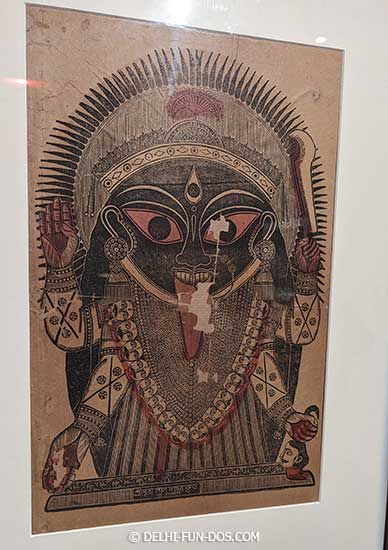
Kalighat is one of the first urban settlements of Kolkata. The Kali temple here attracted pilgrims from all over the country. Given the footfall in this area thanks to the grand goddess, various art forms developed in Kalighat. Kalighat Patachitra was one of those.
The work “Pat” is of Sanskrit origin and means a painting. The Pat painters or Patuas were primarily scroll painters. They would paint mostly religious stories on scrolls and move from one village to another as bards singing songs based on the paintings on the Pat. After Kalighat became a commercial hub, many of them migrated here and started creating smaller paintings that could be framed and hung on walls.
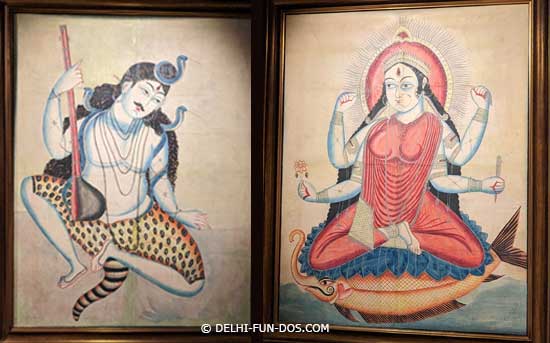
The Kalighat paintings initially were simple. These would be bold linear drawings, round faces and limbs, long eyes, and bright colours that would be made out of natural elements. The earliest forms were perhaps Hindu deities and found a place at altars in many homes. Many of the artists were later commissioned by rich patrons to make oil paintings on religious themes such as Rath Yatra, Ram Durbar, and the forever favourite – Goddess Durga. Many such gorgeous paintings are part of the exhibition. The artists later diversified to subjects beyond religion.
The 19th century also saw the rise of a nouveau-rich class in Bengal. The menfolk of landed families would have made easy money by way of business or money arrangements with the British government. They adopted a more liberal and somewhat awkward Western lifestyle. Showing off wealth became a regular habit and many of these men would compete with each other in weird ways. Some would spend lakhs on marrying cats while some create a menagerie of exquisite animals. As an answer to a challenge Manmatha Nath Mullick of the landowners, Mullick family purchased zebras and trained them to pull his carriage.
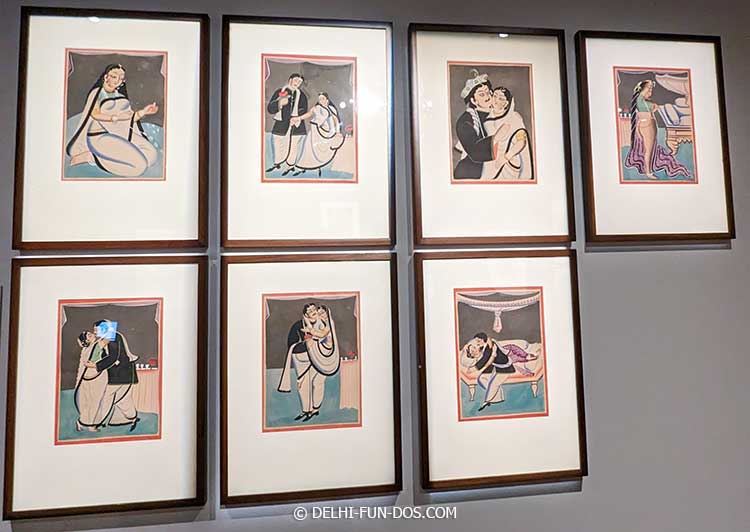
The media in those days would often write satirical articles on the jumbled lifestyle of the Babus. The Kalighat patuas were also inspired and created a series of paintings of the amorous Babus and their love for women. These Babus had just been introduced to British footwear and many paintings depict them in Oxford shoes and hats with dhotis. The amorous women were always pretty faces, voluptuous, and in diaphanous saris. An amusing series of such paintings are also part of this exhibition.
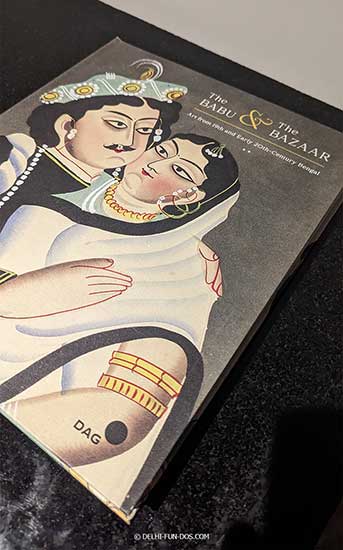
The “Babu and the Bazar” is perhaps a nod to these paintings. Given the popularity of Kalighat, a redlight area also developed in its vicinity. Escorts were therefore very much a part of this culture. Looking at the paintings, we interpret the Bazaar as a culture of confused morality. The bazaar was as colourful as the nightlives of Europe yet was mostly driven by dispensable money by a class of rich people while the rest of the population fell into harder ways. Many of the Pat paintings on display are therefore annals of the decadent culture in that era.
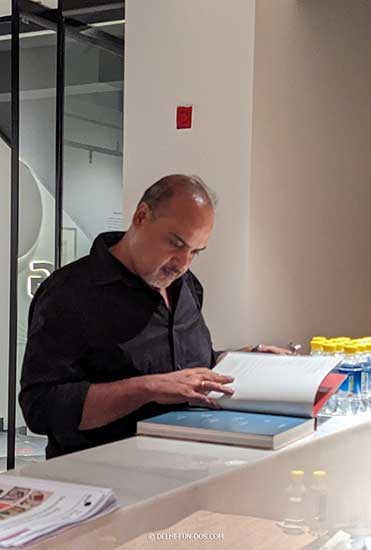
DAG has printed an eponymous catalog which is an exhaustive treatise on Kalighat paintings, Pats, old Bengal lithographs, and so on. There are also prints and lithographs on display. We recall seeing some such lithograph prints in very old almanacs preserved at home.
Patuas Worked as a Group
When you visit DAG, do note that the Pat paintings do not bear any autograph of the artist. The concept of artists’ rights, the way we see it now, is perhaps a Western idea that had not penetrated traditional art forms in India. In fact, even in the present-day of intellectual property rights advocacy, a Tanjore painting, or a Tankha would not bear the artist’s signature.
PIN IT FOR LATER READ
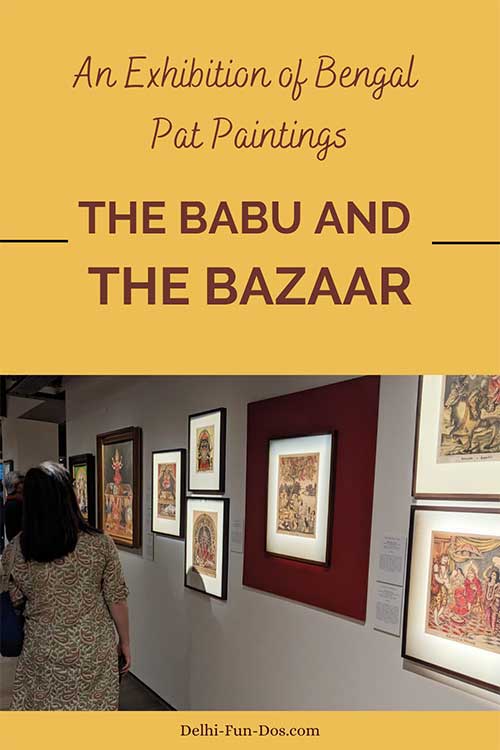
We presume that the Patuas acted in groups where many people were involved in the process from preparing the scroll to the dyes from natural ingredients to painting the lines, colouring the figures, and a master artist adding details. Perhaps they never realised that their creations would become collectors’ items over time and never bothered about artistic ownership.
Art Among Opposites – A Discussion
Deepthi Sashidharan and Pramod KG, co-founders of EKA, held an interesting discussion on the exhibition at DAG. They gave a brief background to the Pat art form and highlighted certain interesting elements of the Pat paintings of that era. The house was full and everyone consumed every word with rapt attention.
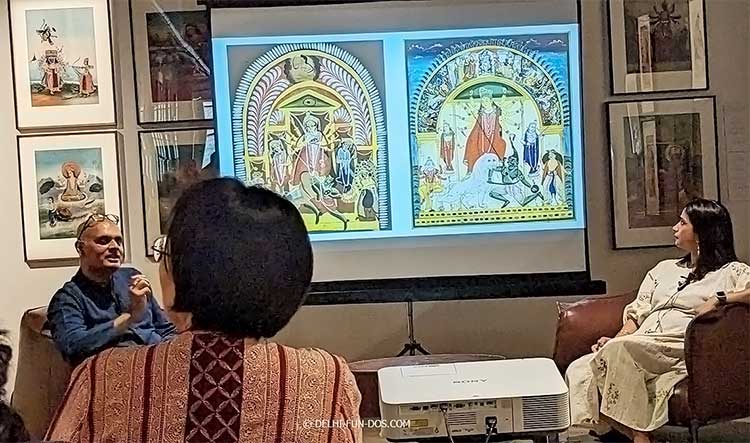
We are happy to have attended this talk and we learned so much during the course of their presentation. It helped us note some of the finer details of the paintings.
Not to miss at “The Babu and The Bazaar” Exhibition
We came across many interesting elements some of which we thought we should bring to your attention.
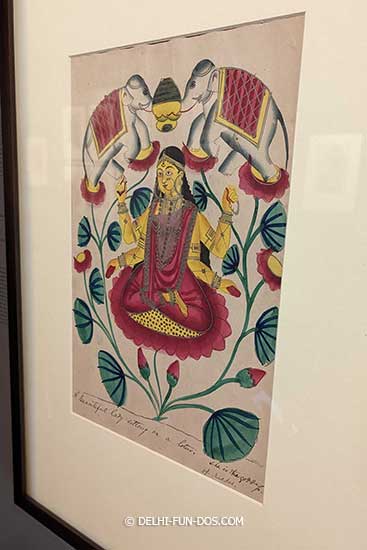
While the Pats were painted by indigenous Patuas, they were often labelled by Britishers who were interested in the subject but had limited knowledge of Bengali or Indian ways and mythology. Hence they often landed up writing inaccurate and amusing descriptions. A pat depicting a central female goddess with two elephants pouring water on her from the back was labelled as “A beautiful lady sitting on a lotus”. This was actually Gajalakshmi, an avatar of Lakshmi, the Hindu goddess of wealth.
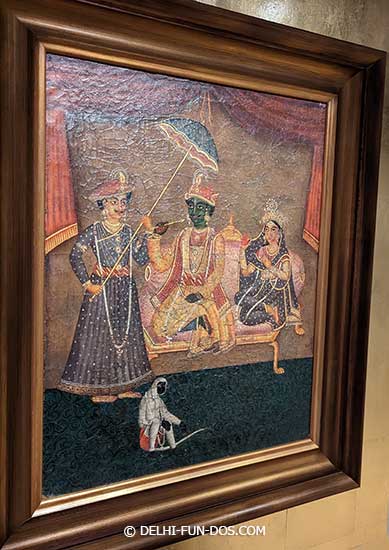
Second, most of the ornaments painted in the Pats are Mughal in style. It was perhaps the trend to emulate royalty. Bengal had extensive Islamic rule before the British. Hence the clothes and ornaments of Mughal princesses found their way into the attire of Hindu deities. The elaborate crowns, strings of pearls worn in layers, armlets that resemble amulets, and diaphanous saris are Muslim influences.
Not only Islamic influence, the Patuas used inspiration from other parts of India as well maybe to break the monotony. A painting of Ram Durbar depicted Ram and Lakshman in long Rajput Angrakha tops and bejewelled turbans. Sita is however dressed in the sari, the common garment for women in then Bengal. Also, in some paintings, we could see hints of colonial architecture in backdrops for scenes from Indian mythology.
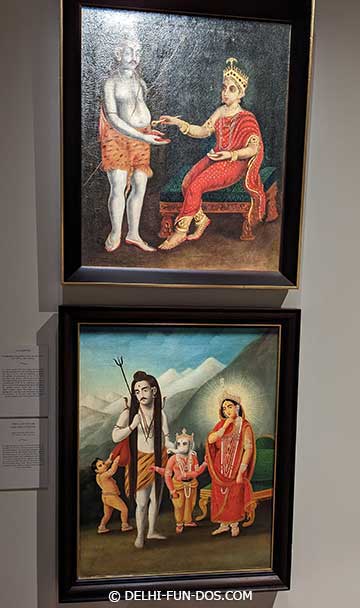
We also came across many paintings that were themed on various episodes of Hindu mythology. The deities in some of them were unknown to us. Maybe these Gods or their stories were widely worshipped in that era but lost popularity over time.
A collection of glass paintings of Pots were on display. These looked dreamy and the faces of the figures looked somewhat alien. Glass-painting was unknown to India in that era and perhaps these were commissioned in China for the Indian Babu. In fact, there was a Chinese settlement in Kolkata in the late 18th century. There is indeed a possibility the paintings could be their skills.
Also, while looking at many of the paintings, especially the one with the metrosexual Babu, we often forgot that these were created more than one and half centuries ago. The theme, the style, and the colours looked very contemporary, and that perhaps makes the Bengal style Pats a classic.
The future of Kalighat Pat
We are celebrating 75 years of the British leaving India. The Babu community has metamorphosed into various levels of the software industry. Commissioning of Kalighat Paintings is unheard-of activity.
What happened to Kalighat style of artwork?
We can talk about 2 scenarios that evolved.
Kalighat Pat inspired many artists. This style was picked up by them as a medium of their expression. One of them is the renowned painter Jamini Roy. Trained in traditional European art, he moved to the Indian style of painting. Jamini Roy adopted the Pat style to express a vast range of subjects including Indian Gods; Christ; human, animal, and bird figures; stalwarts like Mahatma Gandhi, and so on.
Another such artist is Ramananda Bandopadhyay whose works display a strong influence of the Pat style. The Kalighat Pat style of painting achieved somewhat urban refinement under the brushes of the aforesaid artists.
The other development is the widespread reach of the present-day Patuas especially from the Midnapore and Bankura districts of Bengal. The original scroll painter Patuas. They would paint mostly religious stories on scrolls and move from one village to another as bards singing songs based on the paintings on the Pat. With the advent of electronic entertainment, such a form of storytelling is not so common anymore.

These artists now create Pat paintings and have even diversified to painting on t-shirts, umbrellas, lanterns, trays and what have you. This is how we see Kalighat paintings reinvent and live on even after 200 years.
“The Babu and The Bazaar” Dates, Timing
The exhibition is from 8th May to 1st July 2023, 10.30 a.m. to 7 p.m. at Delhi Art Gallery from Monday to Saturday.
How to Reach Delhi Art Gallery
Delhi Art Gallery is in the heart of Delhi on Janpath near Le Meridien Hotel. You can take a cab or drive. We drive and parked in the lane beside the gallery.
Get Direction:
The nearest metro station to Delhi Art Gallery is the Patel Chowk metro station. It is a little walk from here or you can take an auto-rickshaw.
“The Babu and The Bazaar” is a great initiative to enjoy a niche art style from old times. If you are an art lover, photographer, history buff, or like seeing something unique, this exhibition is a rare opportunity for you.

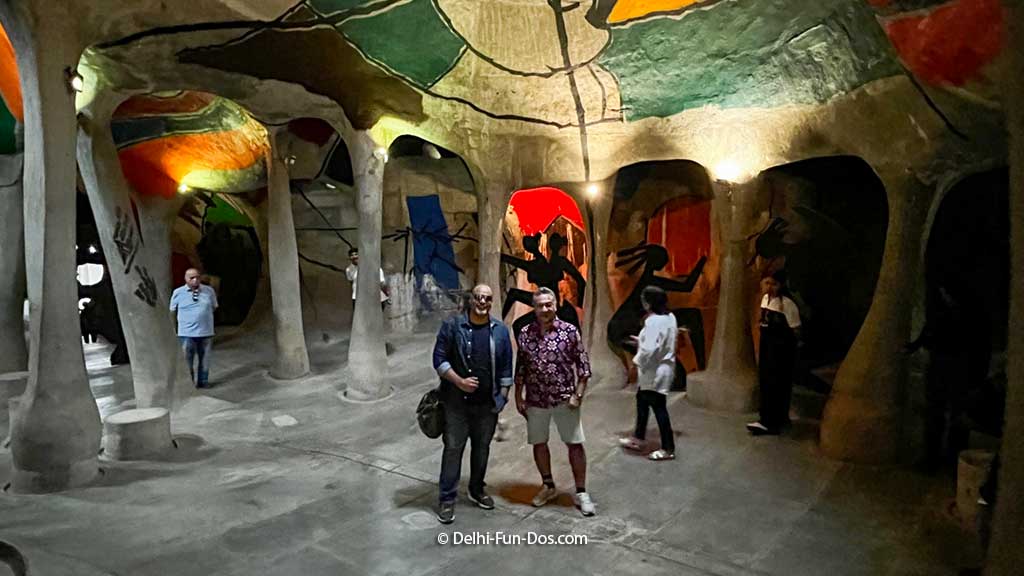
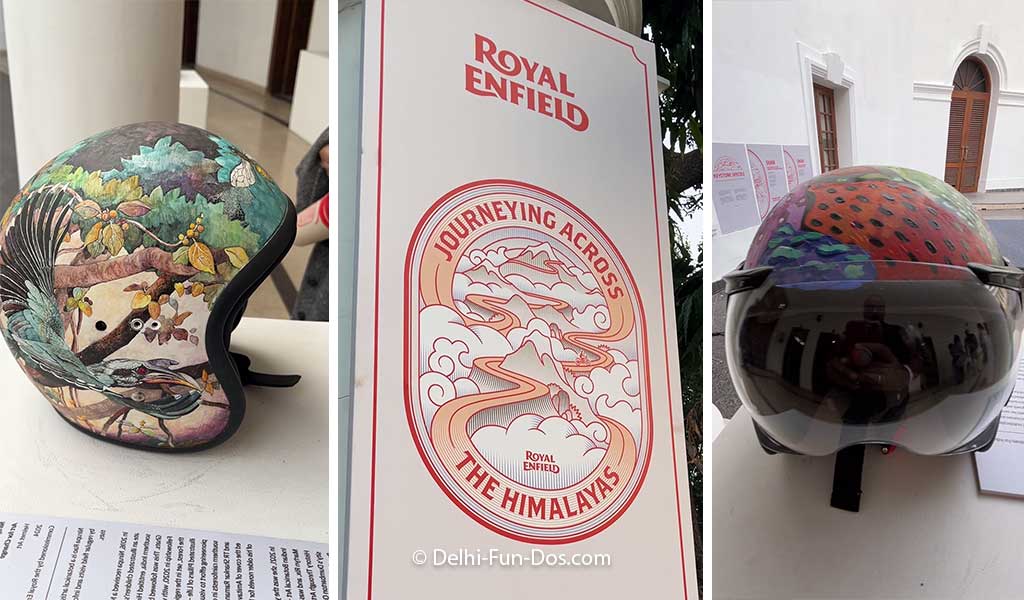

I really enjoyed reading your article about the “The Babu and The Bazaar” exhibition at Delhi Art Gallery. It provided a fascinating glimpse into the world of 19th century Bengal through the beautiful Kalighat Pat paintings. The historical context and insights you provided made the experience come alive. Well done!
Thank you!
Thank you for this amazing virtual tour of some wonderful art and mesmerizing paintings. I would love to visit the Delhi Art Gallery in person. Thanks for the recommendation 😊
This is quite a fascinating post to read. To begin with, the name of the exhibition itself is interesting and gives an indication of what to expect. The paintings look so classic and yet timeless, they provide a peep into an interesting period of Calcutta’s history and lifestyle. Sandy n Vyjay
They do indeed!
It seems you are fond of art as you post about it frequently.
I like the art work, very beautiful & alluring. Also the history of Calcutta through them.
Art is a way of life in India since old times!
This is really fascinating. I particularly love reading your blog because it exposes me to various facets of our culture. Now being a Bong I am particularly thankful for this Pat paintings and had no idea before. Would love to visit the Delhi art gallery.
You must, it is a peek into all things Bengali